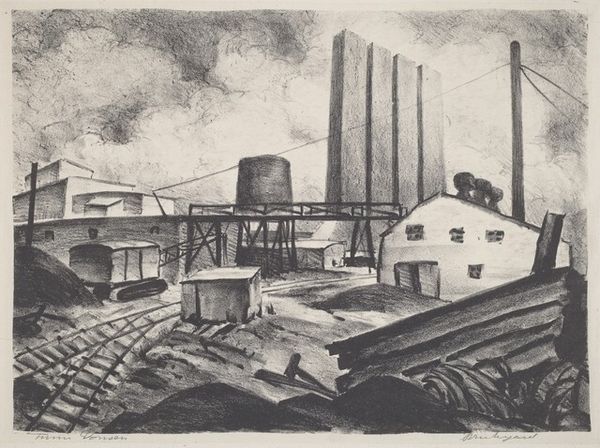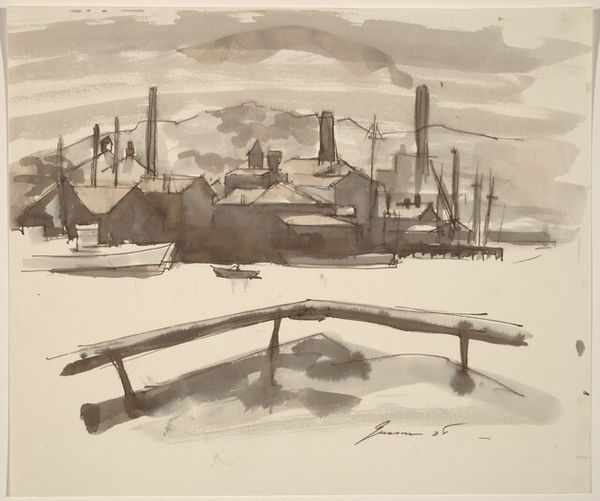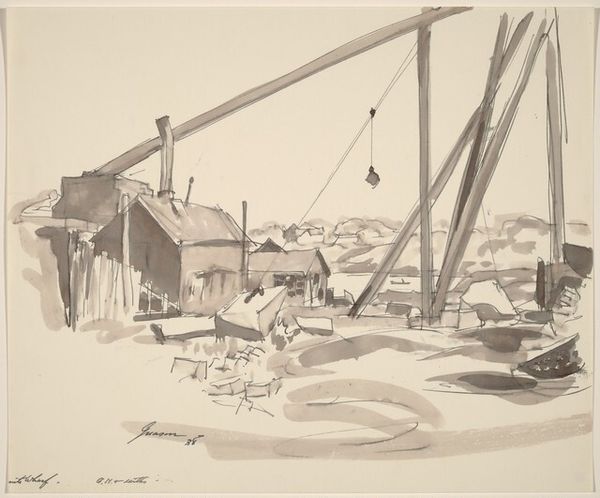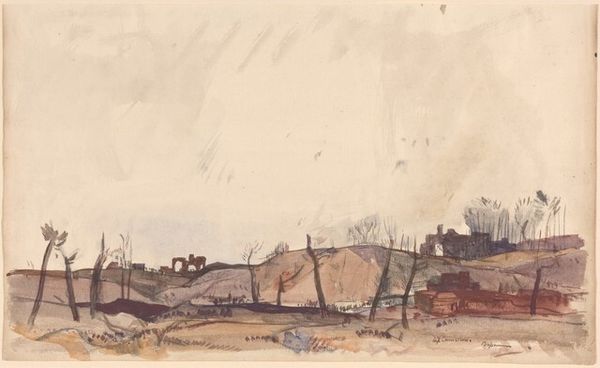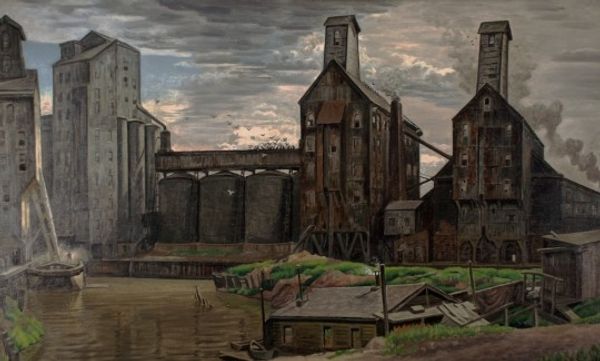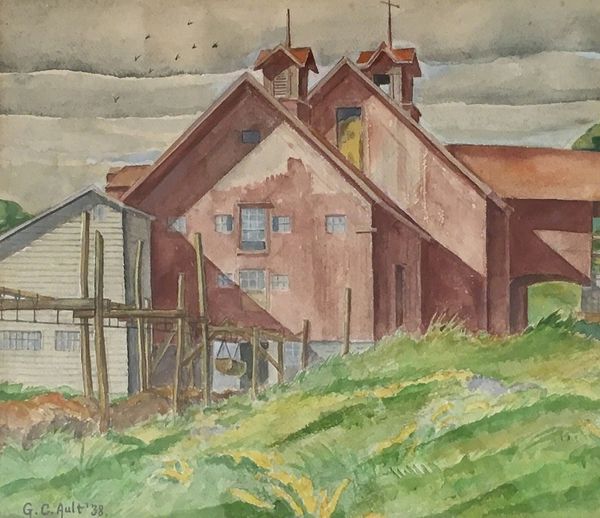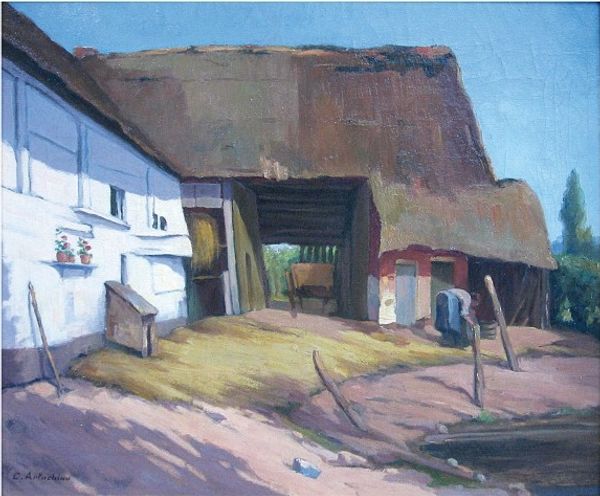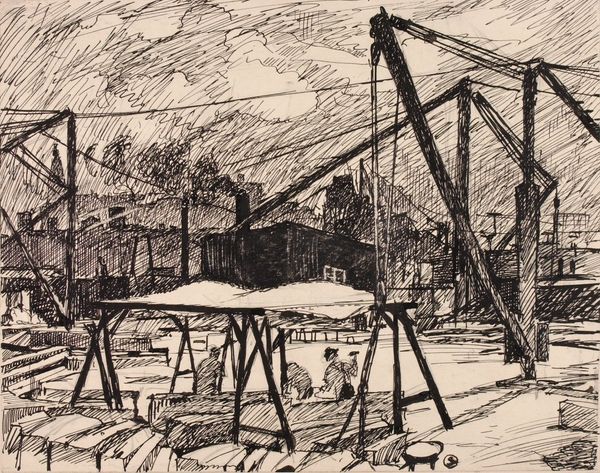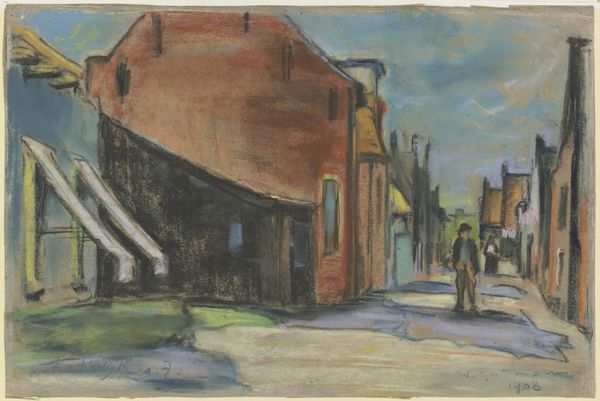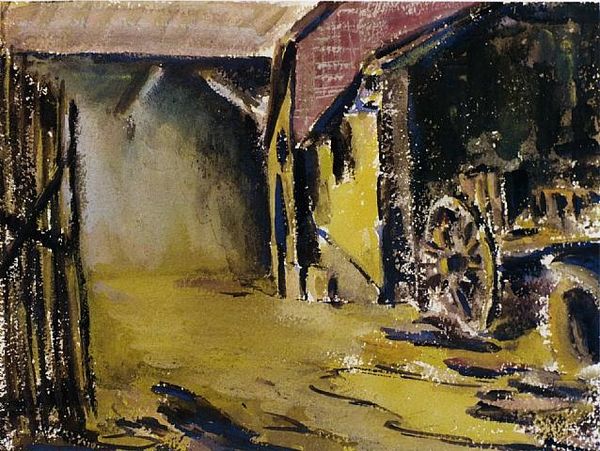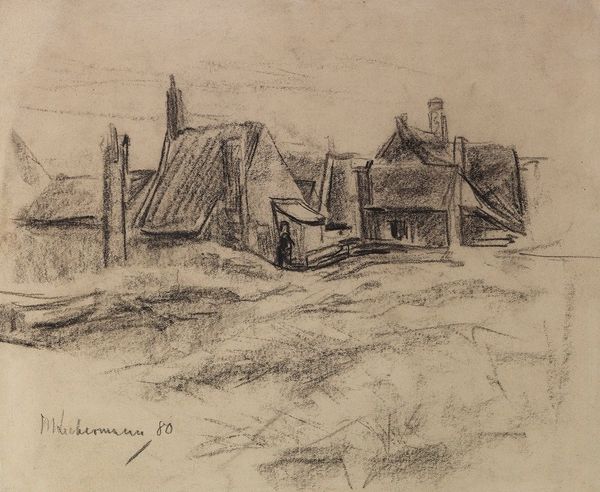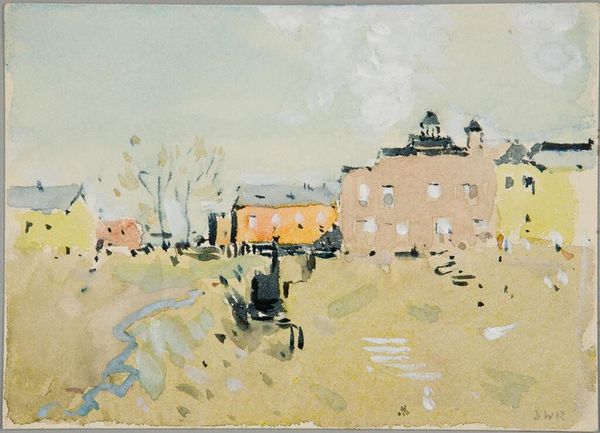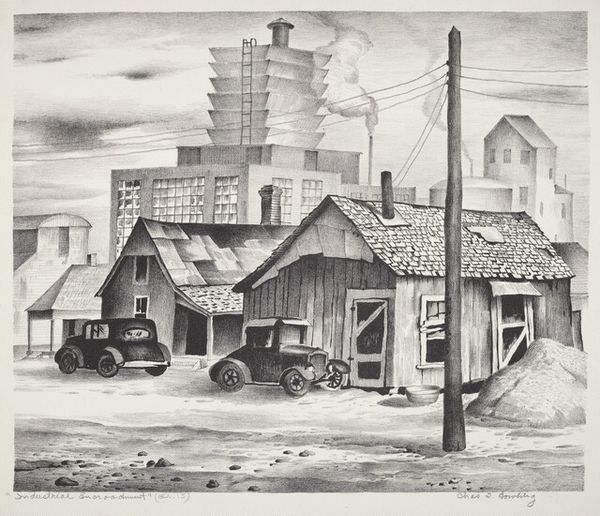
watercolor
#
landscape
#
watercolor
#
watercolour illustration
#
modernism
#
watercolor
#
realism
Copyright: Charles E. Burchfield,Fair Use
Curator: Charles Burchfield rendered "Grain Elevators" in watercolor in 1933. What do you make of it? Editor: Stark. The mood is one of abandonment, almost. Like monuments to a forgotten industry. Curator: The watercolors of Charles Burchfield often document the architecture of industrial and small-town America. His pieces frequently portray buildings not as sites of vitality but places struggling through hard times. Editor: And here, the stark shapes of the grain elevators certainly convey that. The looming silhouettes against the gray sky have a symbolic weight. Grain elevators, historically, represented abundance and security—a community's harvest, literally. But here, they evoke the opposite. Curator: Indeed. Burchfield completed the work in the midst of the Great Depression, which created anxieties about economic and ecological disaster across America. Consider how the landscape itself is largely barren; it's late fall or winter perhaps. There's very little color—Burchfield primarily relies on muted tones. The entire work expresses something akin to despair, and that may reflect not just a specific site, but an entire society's hardship. Editor: You're right. There's something ominous in the lack of detail, too. We can barely discern the buildings' functions—they're looming, gray shapes. It strips away the symbolism of prosperity to expose the hardship beneath. A broken promise made by industrial America? Curator: Perhaps that’s pushing the symbolism, but you’ve offered some interesting context for the cultural and political era in which Burchfield was working. I wonder how contemporary viewers might respond, in an age grappling with very different types of political and environmental crises. Editor: Agreed, It's a reflection on industrial landscapes, memory, and maybe even the transience of symbols. Makes one think about the cyclical nature of prosperity and decline.
Comments
No comments
Be the first to comment and join the conversation on the ultimate creative platform.
